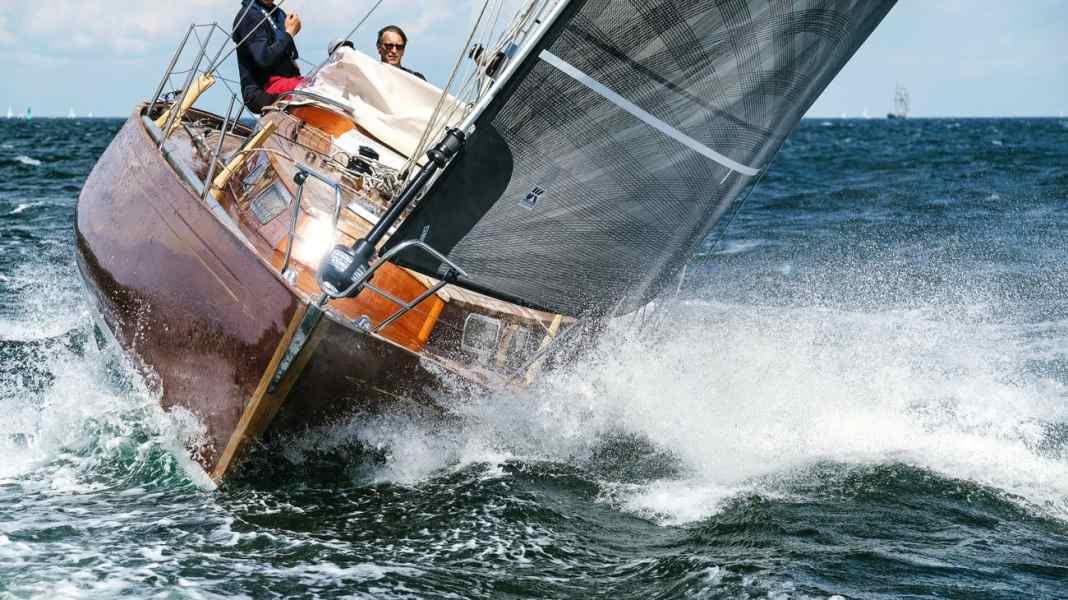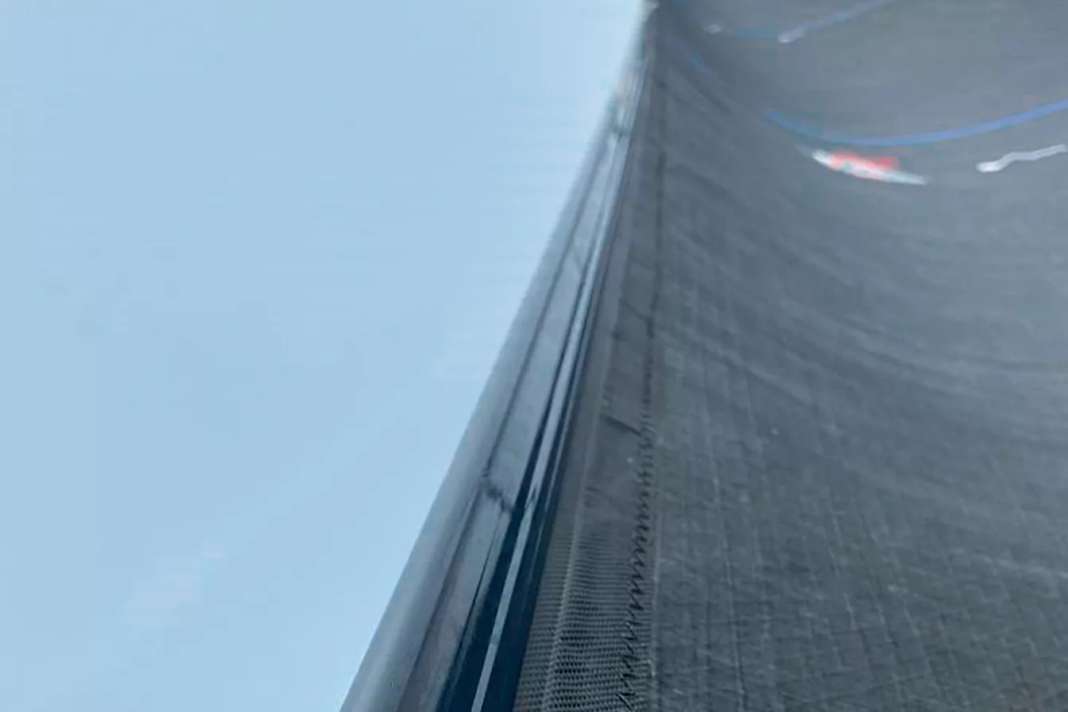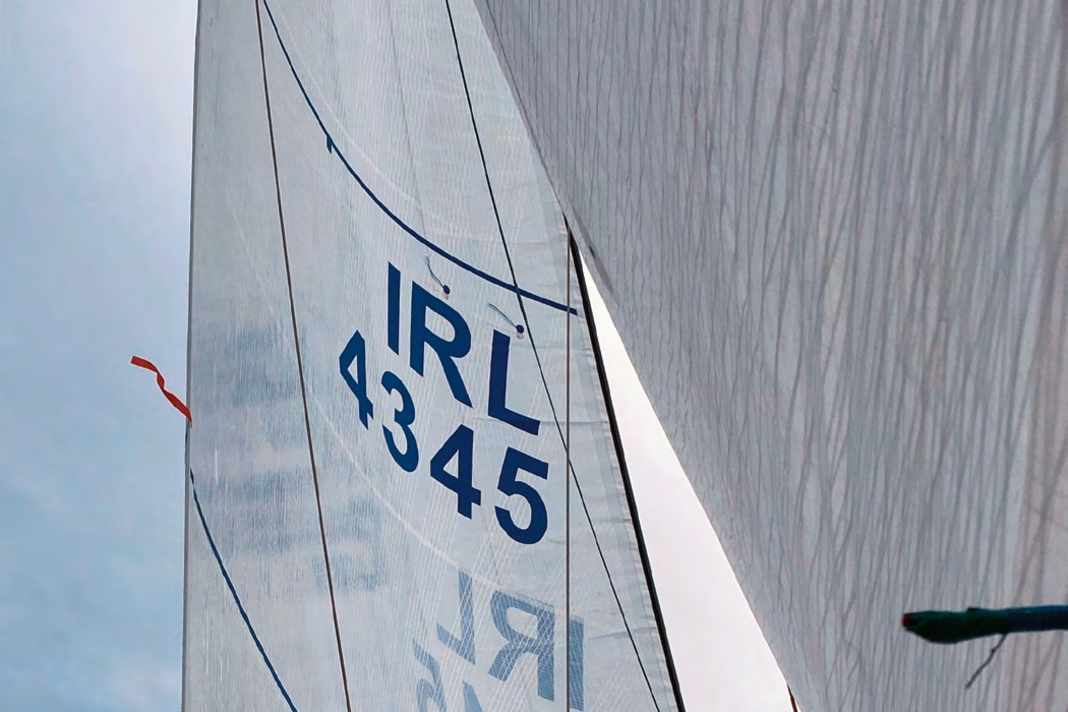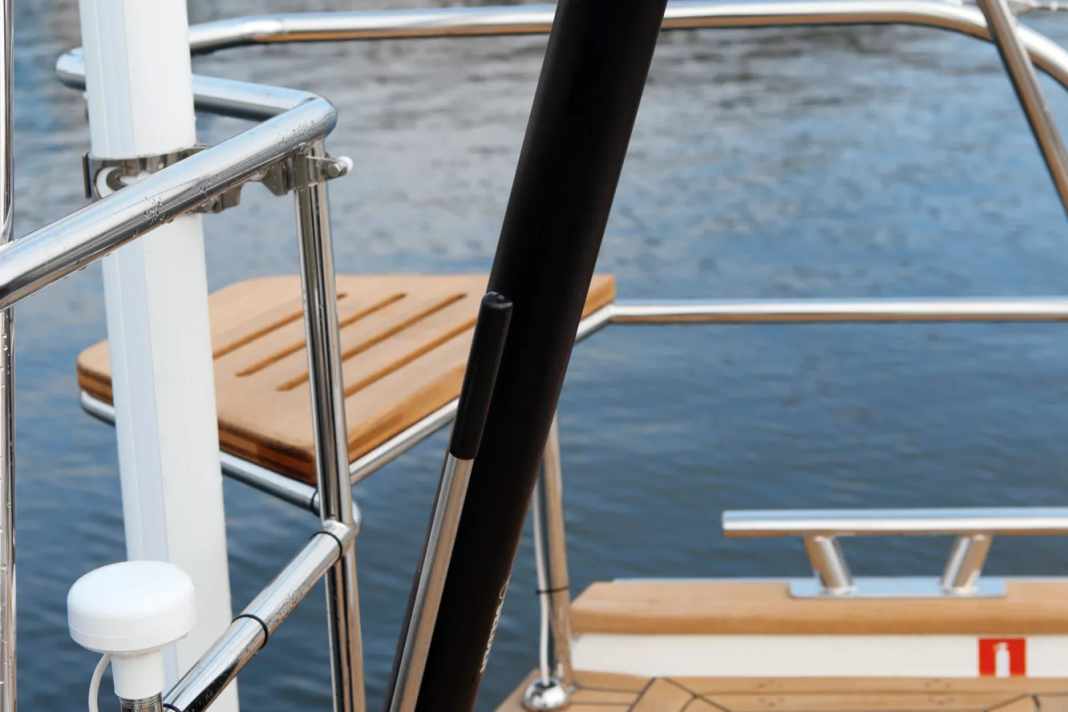
This article was written by Hauke Schmidt in collaboration with Barry Hayes of UK Sailmakers Ireland
When it comes to headsail trim, many sailors think of the sheet and centreboard positions - and not without good reason, as these two settings directly influence the angle of attack and twisting of the sail. If the profile is to be changed, the halyard tension comes into play. Something that is usually overlooked: The sag of the forestay also changes the shape of the sail.
This is how you determine your forestay sag:




Whether it is a cruising boat or a racing yacht does not matter at first. The sagging of the forestay always has the same consequences. Even a perfectly tensioned wire will sag a little due to its own weight, and a certain amount of slack cannot be avoided. This means that the connection from the mast to the forestay fitting is not a straight line, but a slight curve. If pressure is applied to the sail, the effect increases, i.e. the bow becomes rounder. How much the stay sags aft depends on the type of boat and the trim equipment available. On racing boats, it is usually less than ten centimetres, whereas on cruising yachts it can be considerably more.
The stay not only sags backwards, but also to leeward, at an angle of about 45 degrees to the centreline. This changes the force curve in the sail, the cloth is less tensioned in the centre of the luff length and has a lower profile.
Profile and torsion:




What effects does the forestay trim have?
Used consciously, this results in an efficient trimming instrument: the further the stay sags aft, the fuller the luff becomes and the profile deepens. This allows more propulsion to be generated in light winds. Unfortunately, the additional sag also has an effect on the leech. It closes, which is generally undesirable. It is therefore important to find the right balance.
Especially on boats with narrow, very tightly sheeted headsails, you have to struggle with the sag, because this sail configuration only works effectively if the air can flow off the leech of the jib well and the gap to the mainsail is not closed too much. For this reason, a high forestay tension is necessary on such boats even in medium wind conditions.
If the backstay tension is not sufficient to bring the sag under control, the hoist point of the headsail should be trimmed aft. This will give it more twist and the gap to the mainsail will open up again. As soon as the backstay is re-trimmed or the wind pressure eases and the forestay is straighter again, the hoist point should be moved forwards again.
Forestay: What are the consequences of too much slack?
Rig type and sail determine how much headstay sag is acceptable. Narrow-cut headsails of current performance cruisers react much more sensitively to a sagging luff than widely overlapping genoas of older rig configurations. The fittings also play a role. This is because a powerful backstay tensioner is required to get sufficient tension on the forestay.
Regatta yachts are normally equipped accordingly, so the forestay sag is rarely more than ten centimetres. On a cruising boat, the sag can be significantly greater - sometimes up to 30 centimetres. This excessive forestay sag impairs the cruising characteristics in particular, as a profile that is too low requires larger angles of attack and the boat runs with little height. The best way to check how much sag there actually is is to take photos. To do this, leave the backstay in the neutral position, i.e. only slightly set, and go upwind. The sag can be seen most clearly if you take photos along the forestay into the sail. As the greatest sag occurs in the centre of the luff and is a few metres above the deck, it is not easy to determine an exact measurement even with a photo.
The trick is to choose the perspective so that the mast is visible in the background. This gives you a straight reference line. The distance between the leading edge of the mast and the forestay can be estimated using the width of the furling system profile, see the previous page.
The right settings for the forestay
On a regatta boat under 40 feet, it should not be more than ten centimetres, otherwise the luff of the sail will be too round and the profile too deep. For larger boats, the value may be greater. However, it is not only the size of the boat that plays a role, but also the design of the sail. A light genoa 1 usually has more reserves to follow the forestay than a sail designed for more wind.
As described at the beginning, the sag on cruising boats can be significantly greater, as the necessary rig tension cannot be achieved with the standard trim equipment. This can be taken into account in the sail design, but the possibilities are limited, so you should orientate yourself on the ten centimetres that are usual on racers. Touring sails are also designed for this sag, and you get a good balance between rig tension and the shape of the sail. With more sag, the rig becomes soft under load and the luff is too full.
In light winds, the propulsion of the headsail can be significantly improved with a loose forestay. However, the low profile only makes sense as long as the boat is slow. As soon as it accelerates, the backstay should be set gradually and the sag reduced. Pay attention to the speed of the boat. If the sail is trimmed flat too early, you may not have enough power to sail through the wave.
Tensioner tuning
Variants:




The backstay determines the forestay sag. How to make the trim easier:
With top or 9/10 rigs, the backstay takes over part of the forestay tension, which means that the sag can be well controlled even without backstays. With the 9/10 rig, it also influences the mast bend. This is convenient, because pulling the backstay flattens the foresail and mainsail at the same time, making it very easy to take pressure off the boat. However, large forces also occur, which is why the standard trimming devices are not always ideal. The easiest way to upgrade a Taljen system is to add an additional folding traveller. The reduction ratio can be doubled with just one additional deflection. However, the lengths of the backstay and any existing folding traveller must be adjusted. Threaded tensioners are the simplest design and can only be used for top rigs. Up to around 40 feet, crank tensioners can be a convenient alternative, but above this, a hydraulic system is usually required even on yachts with 9/10 rigging.
With the 9/10 rig, part of the forestay tension is held by the shrouds via the swept spreaders. The backstay bends the mast and increases the forestay tension at the same time. The possible mast curve is limited by the lower shrouds. To avoid a negative curve, the backstay must not be completely released when sailing. Too much tension leads to loose upper shrouds.
As the backstay acts with a relatively short lever above the forestay, it is also effective against excessive sag. However, a strong tensioner is required. Even on a 37-foot yacht, up to a tonne of tension may be required. It should be possible to adjust the tension quickly to wind changes. Reduction ratios of 24:1 to 48:1 or a hydraulic system are the first choice.
Also interesting:

